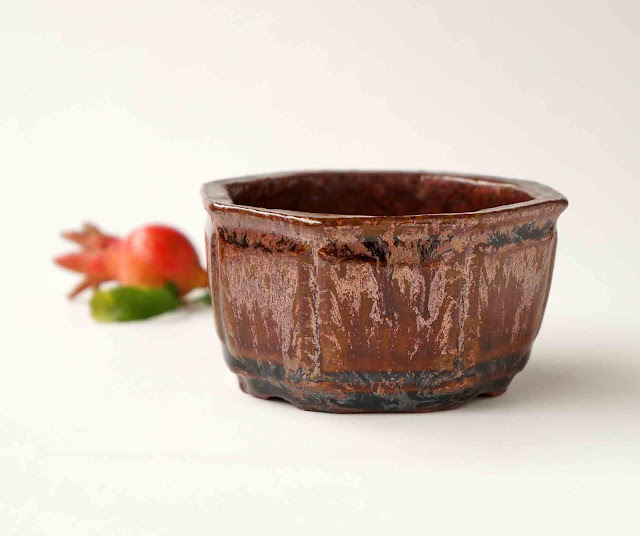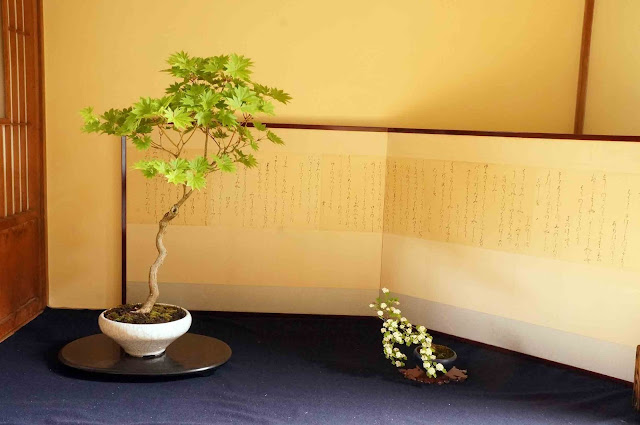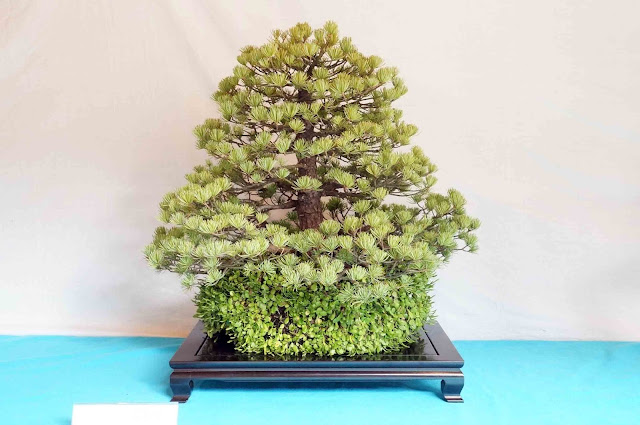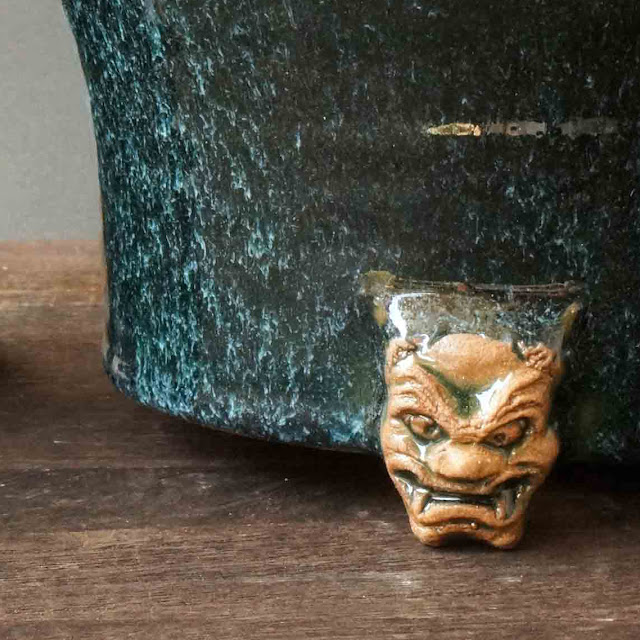Hello, I am Yuki, an owner of the Japanese bonsai pots online store YUKIMONO.
Autumn is coming, in Japan and almost all countries
in the temperate and subtropical northern hemisphere, it is the repotting
season for some plants like those of the Rosaceae family, a rose, a Japanese
quince and a pyracantha. So today, I will introduce some glazed bonsai pots that
would match beautifully with plants especially in autumn.
The
new Oribe glaze 2015
This rectangle bonsai pot was fired last July
by the Tokoname potter, Hidemi kataoka. I heard from him that the pot is covered
with 3 glazes, light green, yellow and blue. That’s why the Oribe (green) glaze
of the pot looks beautiful with such a depth of color and such glaze brings out
the red flowers of a Japanese quince, the little red fruits of a pyracantha and
the bright pink flowers of a camellia.
The
shining brown color in Aventurine glaze
I think this Aventurine glazed pot is one
of Hidemi’s representative works. The many iridescent small crystals shining in
the brown glaze are really beautiful. They remind me of the gold color of the
autumn evening with a gorgeous sunset. If plants such as a bush clover, a Japanese
Beautyberry (Callicarpa japonica) and a Chinese Bellflower were potted in the
glazed pot, they would show the colors of their flowers or fruits most
beautifully.
The
rectangle bonsai pot with blue and green glaze
This pot is absolutely one of masterpieces
made by the Tokoname potter, Koyo. The flowing pattern with the blue and green
glaze on the side of the pot makes me imagine a deep ravine in the middle of a
mountain. The glaze will bring out the maple leaves turning red very well.
By the way, I know it is spring, and the
repotting season now in Australia, South-Africa and many other countries of the
southern hemisphere.
If you are interested in these bonsai pots, please have a look here.
Thank you for reading YUKIMONO blog post.




























